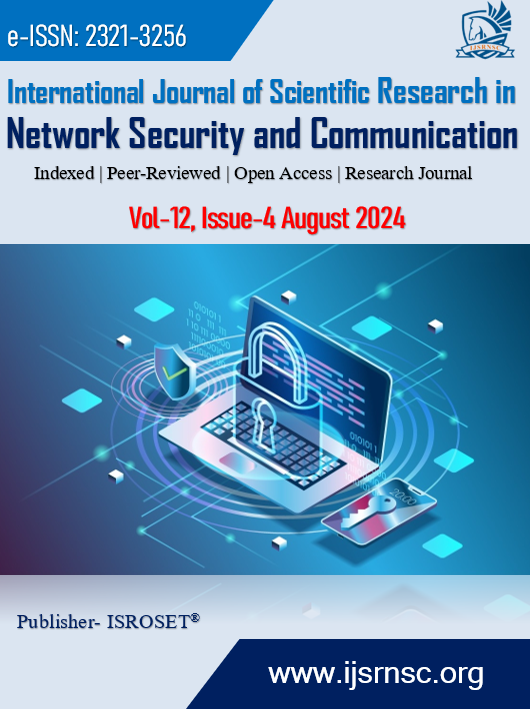Design and Analysis the Radar Cross Section of Complex Targets for Military and Civilian Applications
Keywords:
Radar Cross Section, Statistical properties, arget aspect range and RCS signatureAbstract
In aerospace industry, the importance of RCS in the aerospace industry. State the purpose of the comparative study and analysis of various geometries contributing to RCS prediction. Analyze how changes in frequency affect RCS and discuss the relationship between radar range and RCS. MATLAB to create models of different geometries. Outline the parameters studied (e.g., frequency of operations, radar range) and the tools used for simulation (e.g., MATLAB). This research paper describe design features that minimize RCS (e.g., absorbent paint, smooth surfaces) and list and describe the different geometries analyzed in the study. The software tools used (e.g., MATLAB, commercial RCS simulation software). Use MATLAB’s plotting functions to visualize the results and analyze the variation of RCS and visual aids to demonstrate the variation of RCS with different parameters.
References
Skolnik, M. L. “Introduction to Radar Systems,”. New York: McGraw-Hill Book Company; 1980.
Cheney, Margaret and Borden, Brett. “Fundamentals of Radar Imaging,” Library of Congress Cataloging-in-Publication Data; 2009: United States of America; 2009.
N.I. Landy, S. Sajuigbe, J.J. Mock, D.R. Smith and W.J. Padilla, "Perfect metamaterial absorber", Physical Review Letters, vol. 100, pp. 2007402, 2008.
Sharma, K.K. “Fundamentals of Radar, Sonar and Navigation Engineering,” S. K. Kataria & Sons; 2009.
Vladimir Díaz Charris, “Analysis of radar cross section assessment methods and parameters affecting it for surface ships,” Ship Science & Technology, Vol. 6, Issue.11, pp.91-106, 2012.
Ingo Harre. “RCS in Radar Range Calculations for Maritime Targets,”; V2.0-20040206, Corpus ID: 7112912, 2014
Williams, Cramp, Curtis “Experimental study of the radar cross section of maritime targets,” Electronic Circuits and Systems, Vol. 2, No. 4, 1978.
Civil Aviation Authority of Nepal, “Manual of Air Traffic Services,” CAAN Publication, pp. 5-1-5-39, 2014.
S. Gu, J.P. Barrett, T.H. band, B.I. Popa and S.A. cummer, "Broad band low-reflection metamaterial absorber,", J. Appl. Phys., vol. 108064913, 2010.
Alves, M. A. and M. C. Rezende, “Teaching radar cross section concepts to undergraduate students with a simulation software,” Proceedings of the X International Conference on Engineering and Technology Education, 108–113, Santos, Brazil, 2008.
Knott, E. F., J. F. Schaeffer, and M. T. Tuley, “Radar Cross Section,” Artech House Inc., Norwood, 1993.
Essen, H., S. Boehmsdorff, G. Briegel, and A. Wahlen, “On the scattering mechanism of power lines at millimeter-waves,” IEEE Trans. on Geoscience and Remote Sensing, Vol. 40, No. 9, 1895–1903, 2002.
Stephen John Beaumont, “Information and Communication Technologies in State affairs: Challenges of E-Governance,” International Journal of Scientific Research in Computer Science and Engineering, Vol.5, Issue.1, pp.24-26, 2017.
Nishan Khadka, Sulav Parajuli, Aayush Bhattarai, Sanjaya Neupane, "A Study of Optimization of Aircraft Separation using the Time Based Separation at Tribhuvan International Airport," World Academics Journal of Engineering Sciences, Vol.7, Issue.2, pp.1-7, 2020
Downloads
Published
How to Cite
Issue
Section
License

This work is licensed under a Creative Commons Attribution 4.0 International License.
Authors contributing to this journal agree to publish their articles under the Creative Commons Attribution 4.0 International License, allowing third parties to share their work (copy, distribute, transmit) and to adapt it, under the condition that the authors are given credit and that in the event of reuse or distribution, the terms of this license are made clear.









